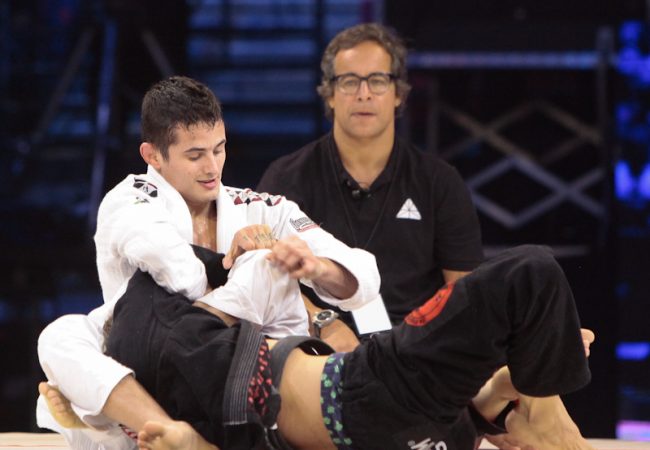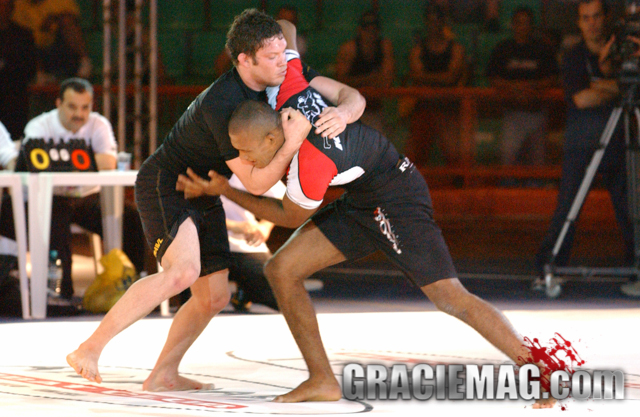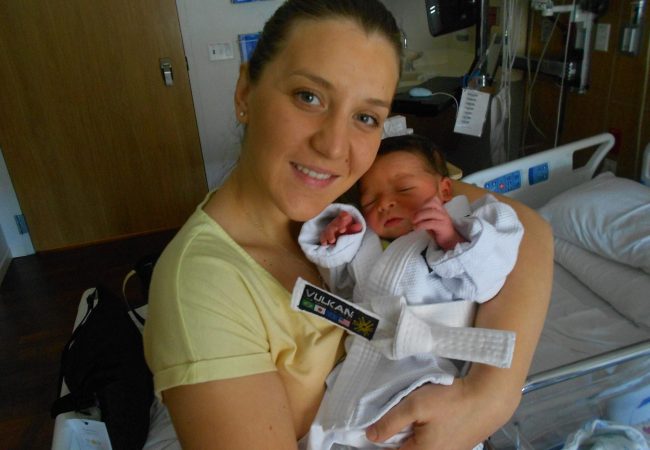
Japan’s “Count Koma” demonstrates a Jiu-Jitsu control position involving the arm. Photo: GRACIEMAG.com archives.
Grandmaster Mitsuyo Maeda (1878-1941) learned Jiu-Jitsu in Japan, was bestowed with the nickname Count Koma in Spain, won hundreds of fights in Cuba, and disseminated his knowledge to promising young students, like Carlos Gracie, in Brazil.
To bear fruit until this day, and at every corner of the planet, the master had to have firmly entrenched roots and a sound trunk.
To pay homage to Count Koma on the 70th year since his passing, GRACIEMAG.com put together a list of the main lessons the Japanese samurai left us. Reflect, learn, and—why not?—have fun.
1. START IN SUMO
Around the small town of Aomori, where he was born, the young Maeda was known as “Sumo Boy,” thanks to the fascination he had for the style of fighting taught by his father. Years later, he went to study in Tokyo, where he was introduced to Jiu-Jitsu, trained with Jigaro Kano and fell in love with the gentle art, which he would go on to teach to Carlos Gracie in Brazil.
Lesson: Expand your horizons. You’ll only fathom what techniques or styles work best for you if you open your mind and learn new things.
2. 15 OPPONENTS SEPARATING HIM FROM A BLACK BELT IN JIU-JITSU
As history has it, Mitsuyo Maeda received his black belt when he was 20 years of age, on December 25, 1898, at the revered Kodokan dojo. To receive his promotion, Maeda had to beat 15 opponents on the same day, which he did with flying colors.
Lesson: There is no glory without sacrifice. The greater the effort, the greater the reward.
http://www.youtube.com/watch?v=m0fH_8kv7ac
3. MISSION IN CALIFORNIA
In 1904, at the behest of Grandmaster Jigoro Kano, Maeda traveled to San Francisco, in the USA, to spread the word on Japanese combat techniques. The art wasn’t a complete novelty in the country, though. President Theodore Roosevelt had himself trained with a Japanese Jiu-Jitsu master, named Yamashita.
Lesson: Have faith in the mission given to you by your master, whatever and wherever it may be. It will be more important than it may at first seem.
4. HEALTHY EXTRA-ACADEMY HABITS
In the Northern Brazilian city of Belém do Pará, where he ultimately decided to put down roots, Count Koma influenced Carlos Gracie in many things that did not have to do with training in the academy. Healthy dietary habits, good cheer, patience and others of the Japanese master’s traits were mimicked by the disciple Carlos.
Lesson: A master doesn’t just teach Jiu-Jitsu. He is a positive influence off the mat, as well.
5. COUNT KOMA’S DOJO IN BRAZIL
Koma never did return to Japan to stay, ending his days in Brazil. It remains unknown whether Jigoro Kano, who was more interested in spreading judo, was proud of the hundreds upon hundreds of victories his student achieved by way of submission. In any case, Koma lived by his own book and Jiu-Jitsu is alive and well thanks to his boldness.
Final lesson: If upon reflection you realize it’s time to part ways with your master, at least don’t open an academy in the same neighborhood!

Count Koma and Maeda family in Brazil / Publicity photo
What do you think, dear reader, what’s the main lesson Count Koma’s life story left as his legacy? Is there any tale from the Japanese grandmaster’s career that you find most striking? Share it with us below.





